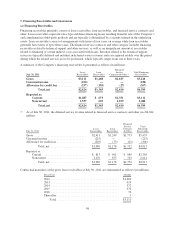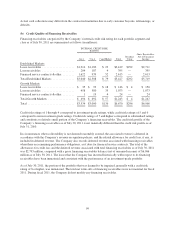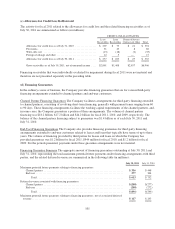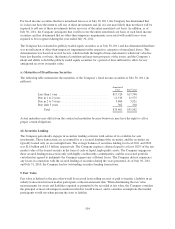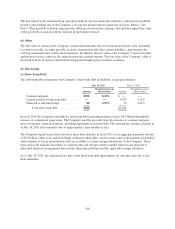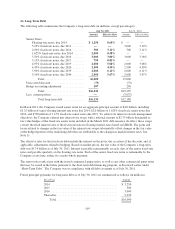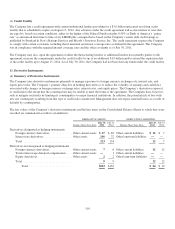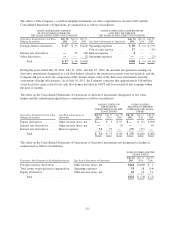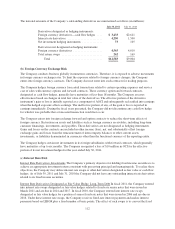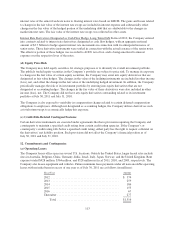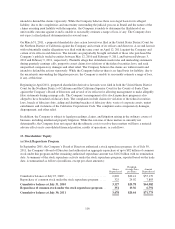Cisco 2011 Annual Report Download - page 114
Download and view the complete annual report
Please find page 114 of the 2011 Cisco annual report below. You can navigate through the pages in the report by either clicking on the pages listed below, or by using the keyword search tool below to find specific information within the annual report.
Level 2 fixed income securities are priced using quoted market prices for similar instruments or nonbinding
market prices that are corroborated by observable market data. The Company uses inputs such as actual trade
data, benchmark yields, broker/dealer quotes, and other similar data, which are obtained from quoted market
prices, independent pricing vendors, or other sources, to determine the ultimate fair value of these assets and
liabilities. The Company uses such pricing data as the primary input to make its assessments and determinations
as to the ultimate valuation of its investment portfolio and has not made, during the periods presented, any
material adjustments to such inputs. The Company is ultimately responsible for the financial statements and
underlying estimates. The Company’s derivative instruments are primarily classified as Level 2, as they are not
actively traded and are valued using pricing models that use observable market inputs. The Company did not
have any transfers between Level 1 and Level 2 fair value measurements during either fiscal 2011 or 2010.
Level 3 assets include asset-backed securities and certain derivative instruments, the values of which are
determined based on discounted cash flow models using inputs that the Company could not corroborate with
market data.
The following tables present a reconciliation for all assets measured at fair value on a recurring basis using
significant unobservable inputs (Level 3) for the years ended July 30, 2011 and July 31, 2010 (in millions):
Asset-Backed
Securities
Derivative
Assets Total
Balance at July 31, 2010 ............................... $ 149 $ 3 $ 152
Total gains and losses (realized and unrealized):
Included in other income (loss), net ................. 3 (1) 2
Purchases, sales and maturities ......................... (31) — (31)
Balance at July 30, 2011 ............................... $ 121 $ 2 $ 123
Losses attributable to assets still held as of July 30, 2011 .... $ — $ (1) $ (1)
Asset-Backed
Securities
Derivative
Assets Total
Balance at July 25, 2009 ................................ $223 $ 4 $227
Total gains and losses (realized and unrealized):
Included in other income (loss), net ................... (6) — (6)
Included in operating expenses ....................... — (1) (1)
Included in other comprehensive income ............... 34 — 34
Purchases, sales and maturities ........................... (102) — (102)
Balance at July 31, 2010 ................................ $149 $ 3 $152
Losses attributable to assets still held as of July 31, 2010 ...... $— $ (1) $ (1)
106




